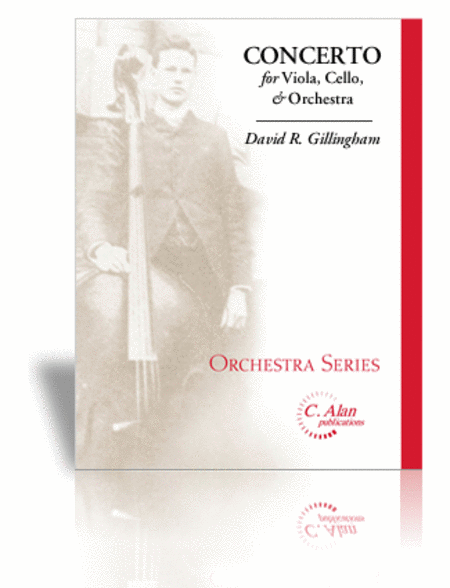Concerto for Viola, Cello & Orchestra
-
Ships in 3 to 4 weeks
Details
Description
SKU: CN.14641
Composed by David Gillingham. Orchestra Music. Score only. Duration 21:45. Published by C. Alan Publications (CN.14641).The concerto seeks to exploit the timbre and tessitura of both the viola and the cello while enhancing that partnership with the multiple timbres of the orchestra. The first movement themes are lyrical, somber and reflective, while the second movement features a passionate theme consisting of falling sevenths. The final movement is dance-like and reflects a rather magical and whimsical mood. After an extended cadenza for the viola and cello, a spirited coda aptly ends the work.
The Concerto for Viola, Cello and Orchestra is dedicated to my daughter, Amy, her good friend, Holly Attar and Carlton Woods, conductor of the Central Michigan University Symphony Orchestra for the occasion of his retirement at the close of the academic year, 2006-2007. The concerto seeks to exploit the timbre and tessitura of both the viola and the cello while enhancing that partnership with the multiple timbres of the orchestra. The first movement is cast in a sonata design in A minor. The themes are lyrical, somber and reflective. The second movement is structured in ABA song form in D Major and features a passionate theme consisting of falling sevenths. The final movement, in sonata-rondo design, is dance-like in prevailing 6/8 meter and reflects a rather magical and whimsical mood. The return of the first theme in the recapitulation becomes an extended cadenza for the viola and cello. A spirited coda aptly ends the work.

 Share
Share